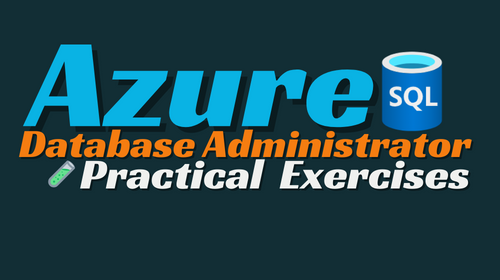- Home
- Azure Databases
- Azure Database Administrator Associate Certification🎓
Azure Database Administrator Associate Certification🎓
Be a Expert : Azure Database Administrator Associate Certification
If you’re aiming for the DP-300 certification, you’ll need expertise in creating and managing database solutions designed for various workloads using both on-premises SQL Server and Azure SQL services.
Your Role as a Database Administrator 🛠️
As a database administrator, your job involves managing both on-premises and cloud databases built with SQL Server and Azure SQL services. You are responsible for implementing and overseeing the operational aspects of data platforms in cloud-native and hybrid environments.
Key Responsibilities 📋
Your main responsibilities include:
- Management: Oversee and manage database systems to ensure they run smoothly.
- Availability: Ensure databases are accessible and reliable.
- Security: Implement measures to protect data from unauthorized access and threats.
- Performance Monitoring and Optimization: Regularly check and enhance the performance of databases.
You will also need to develop strategies for migrating databases between on-premises environments and Azure. Collaboration is key, as you’ll work with Azure data engineers, solution architects, developers, data scientists, and other professionals to manage data platform solutions effectively.
Essential Knowledge and Skills 📚
To excel in this certification, you should be familiar with:
- Azure SQL Database
- Azure SQL Managed Instance
- SQL Server on Azure Virtual Machines (Windows and Linux)
Skills Measured 📊
The DP-300 exam tests your abilities in the following areas:
- Plan and Implement Data Platform Resources: Set up and configure the necessary resources for your data platform.
- Implement a Secure Environment: Ensure data protection through security best practices.
- Monitor, Configure, and Optimize Database Resources: Keep your databases running efficiently and effectively.
- Configure and Manage Automation of Tasks: Use tools to automate routine tasks for better efficiency.
- Plan and Configure a High Availability and Disaster Recovery (HA/DR) Environment: Make sure your database solutions are resilient and can recover quickly from failures.
Hands-on Labs 🧪
Here are some practical labs to help you gain hands-on experience:
- Setup your own environment
- Provision SQL Server on an Azure Virtual Machine
- Provision an Azure SQL Database
- Authorize access to Azure SQL Database with Entra ID
- Configure Azure SQL Database firewall rules
- Enable Microsoft Defender for SQL and Data classification
- Isolate performance problems through monitoring
- Detect and correct fragmentation issues
- Identify and resolve blocking issues
- Identify database design issues
- Isolate problem areas in poorly performing queries
- Deploy Azure SQL Database using ARM template
- Create a CPU status alert for a SQL Server
- Deploy an automation runbook to automatically rebuild indexes
- Configure geo-replication for Azure SQL Database
- Backup to URL and Restore from URL
By mastering these skills and knowledge areas, you’ll be well-prepared to earn the DP-300 certification and advance your career as an Azure Database Administrator. 🚀

